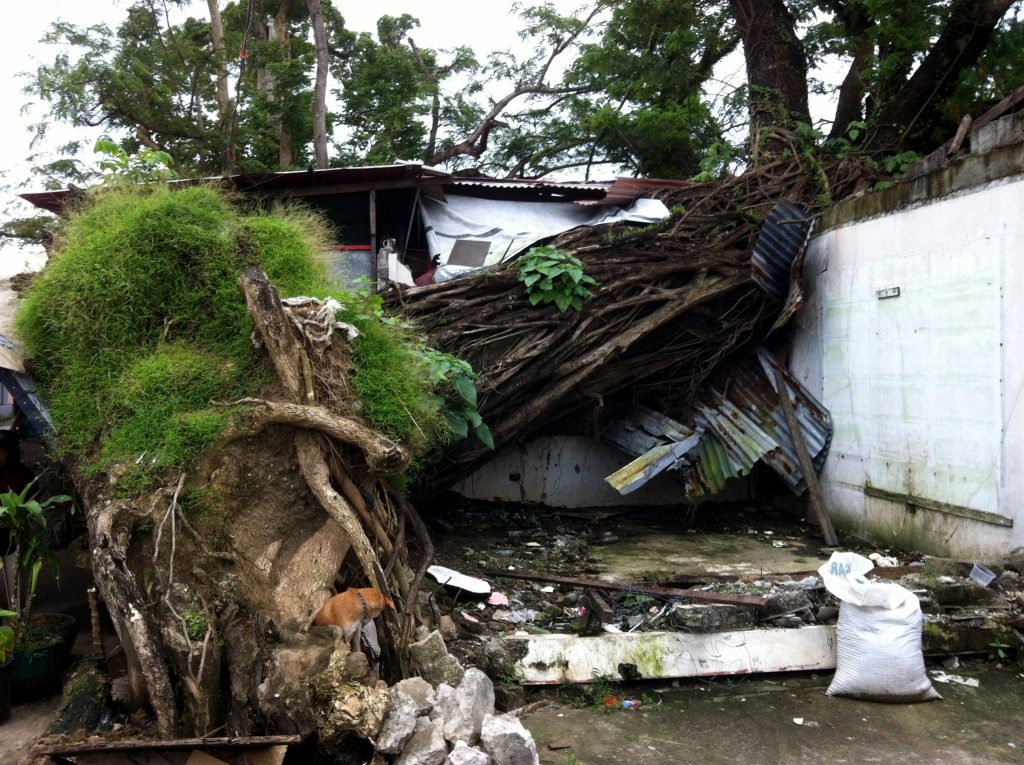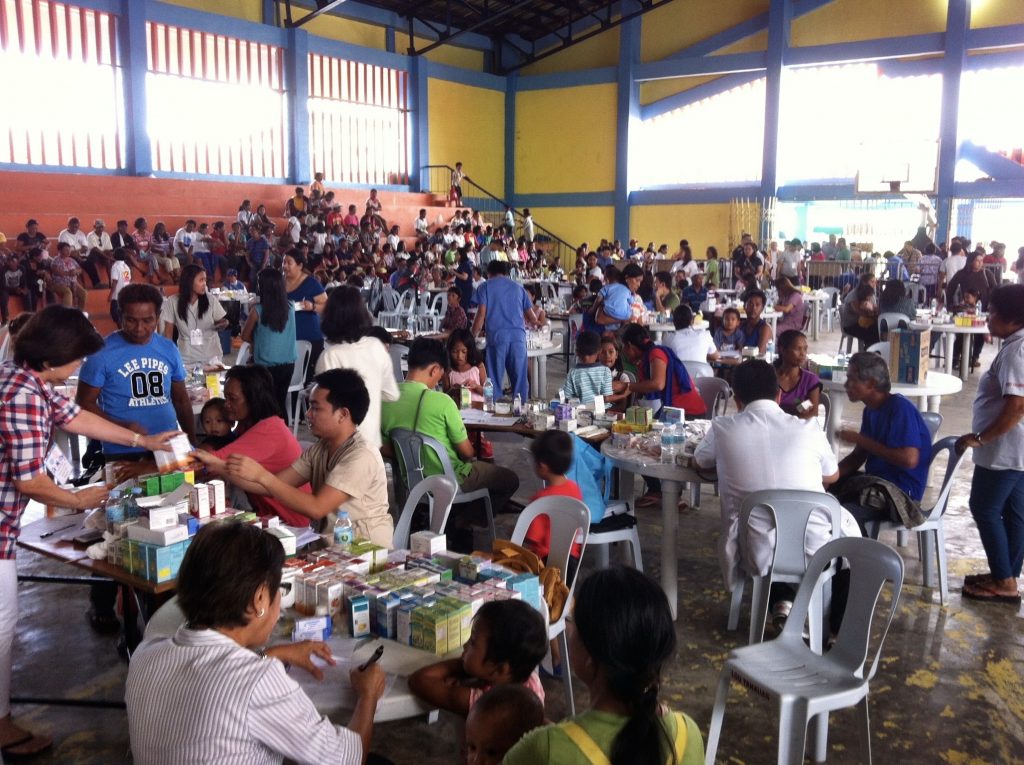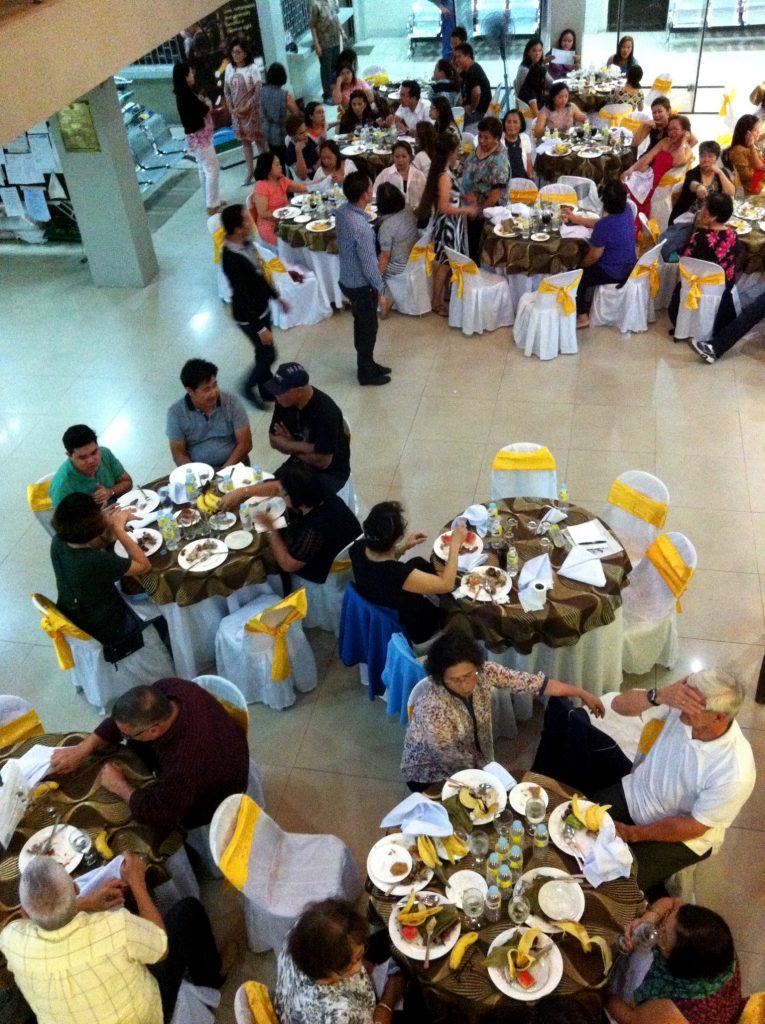
i spent last week in the town of tanauan, about one hour south of tacloban. tanauan was the hardest hit area during typhoon haiyan, which occurred just over one year ago. a 20-foot storm surge, or sudden increase in sea level secondary to wind and profound changes in barometric pressure, swept over the town. it killed somewhere between 5% and 10% of the population. no one really knows how many people were killed, as there were many undocumented workers from other provinces who had moved there for informal work. the storm surge came in very quickly, moving one kilometer inland, demolishing everything in its path. the water moved back out to sea much more slowly, leaving rubble and dead bodies behind in the ditches. after a few days the dead bodies began decomposing and blew up like balloons. they were buried in numerous mass graves along the side of the road – many of the bodies never identified. some graves are marked with touching memorials; others are unmarked and will likely soon be forgotten. one mass grave is beneath the town square, which is now being revitalized as a basketball court. the town’s new official slogan is “every day is a better day in tanauan.”

i was assigned with the local interns, but their schedule was different this week than most. a massive medical mission was being held in the newly built civic center, led by a group of 40 volunteers from california. dr. gabriola, an internist at stanford, was in charge. five physicians from california and 15 from the philippines (as well as tim and i) saw 5000 patients over four days at no charge. most of the american volunteers were ethnically filipino, wanting to give back to the country of their youth.
though missions like this were clearly necessary following the typhoon, a critic could rip holes in the ethics of continuing to hold these types of events over a year later, when the local healthcare system is already back in full swing. we’re way past post-disaster medicine now; access to healthcare is now about the same as it was before the typhoon, and missions like this lack sustainability. critiques could include that a mission like this undercuts the livelihood of local healthcare professionals. but the interns enlightened me, telling me that the patients who attend these free missions are a completely different demographic than can afford to pay a physician. another critique is that many patients depend exclusively on these missions for issues they should be seeing a primary care physician for. for example, we saw numerous patients who experienced strokes, only to wait weeks for the next free medical mission to see a medical professional. of course, without the missions, some would see a doctor sooner, and some never would. undoubtedly, many of the patients were feigning “cough,” in an effort to procure free amoxicillin, believed here to be the ultimate cure for everything. and most of the legitimate medical concerns we saw were chronic in nature (hypertension, diabetes, etc), meaning that being seen by a different doctor every few months at a mission isn’t really doing any good.
dr. gabriola did actually have a very nuanced perspective on global health. she waxed poetically on the pros and cons of a major mission like this with tim and i, and it was quite inspiring. ultimately, in some contexts, perhaps such as this, the benefits of this type of mission may overshadow the drawbacks. but it should always be done as collaboratively as possible, and with the goal of strengthening the local system instead of competing with it. tim and i got name tags that said “dr” on them, more autonomy than we’ve ever had before, and tried not to give out too much amoxicillin.



the week ended with a good-bye party held by the town for the american volunteers, and we were invited. we traveled to the event hanging off the back of a jeepney; others were sitting on the roof of the speeding, swerving vehicle watching movies on their laptops. in what would appear to be filipino-american fashion, at the opulent event there were two full hours of speeches, followed by a presentation of a certificate to every single volunteer, all before dinner. the dinner was worth waiting for, though, as it included lechon, an entire suckling (hence fattier) pig cooked on a spit. then there was dancing, complete with dance instructors. i was unable to elicit who was paying for all this extravagance – the american volunteers or the town. it was unequivocally over the top for some people who volunteered for a few days. oh well, parties are always fun!

